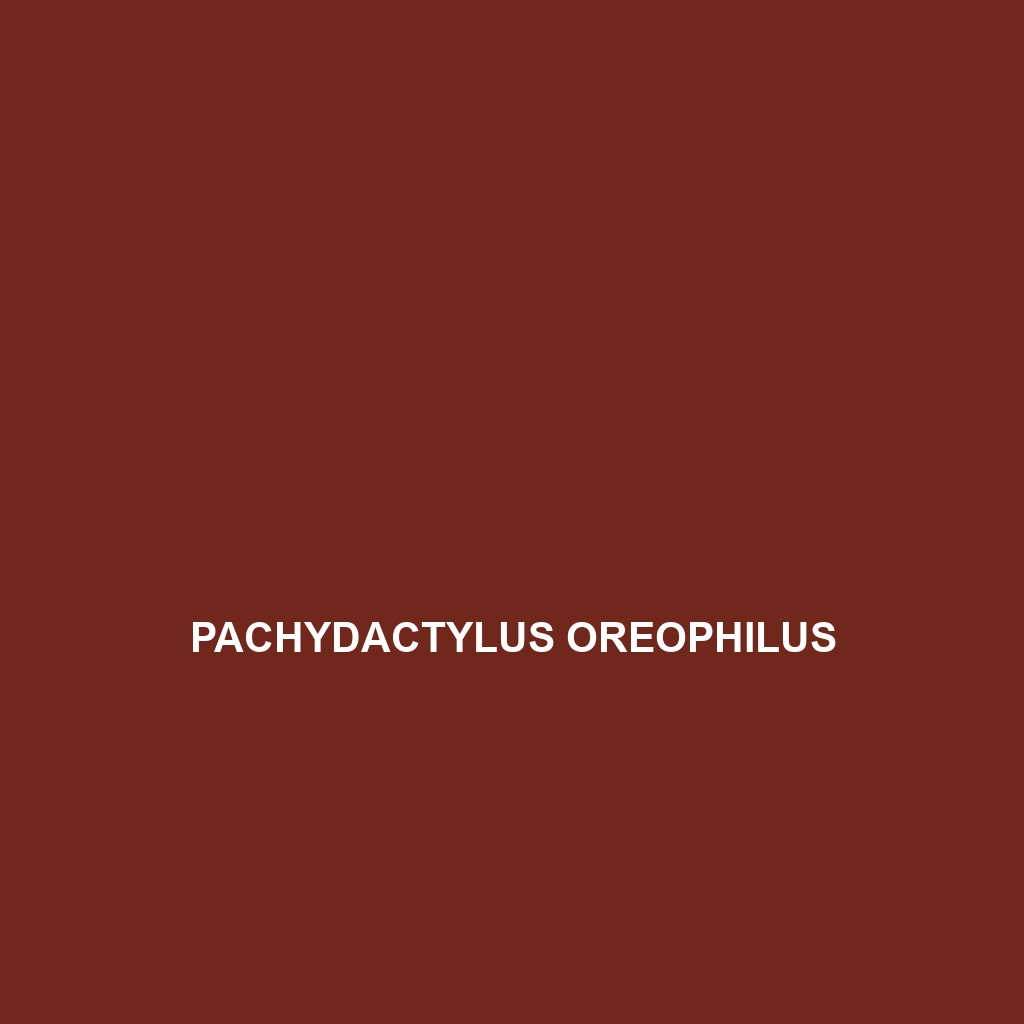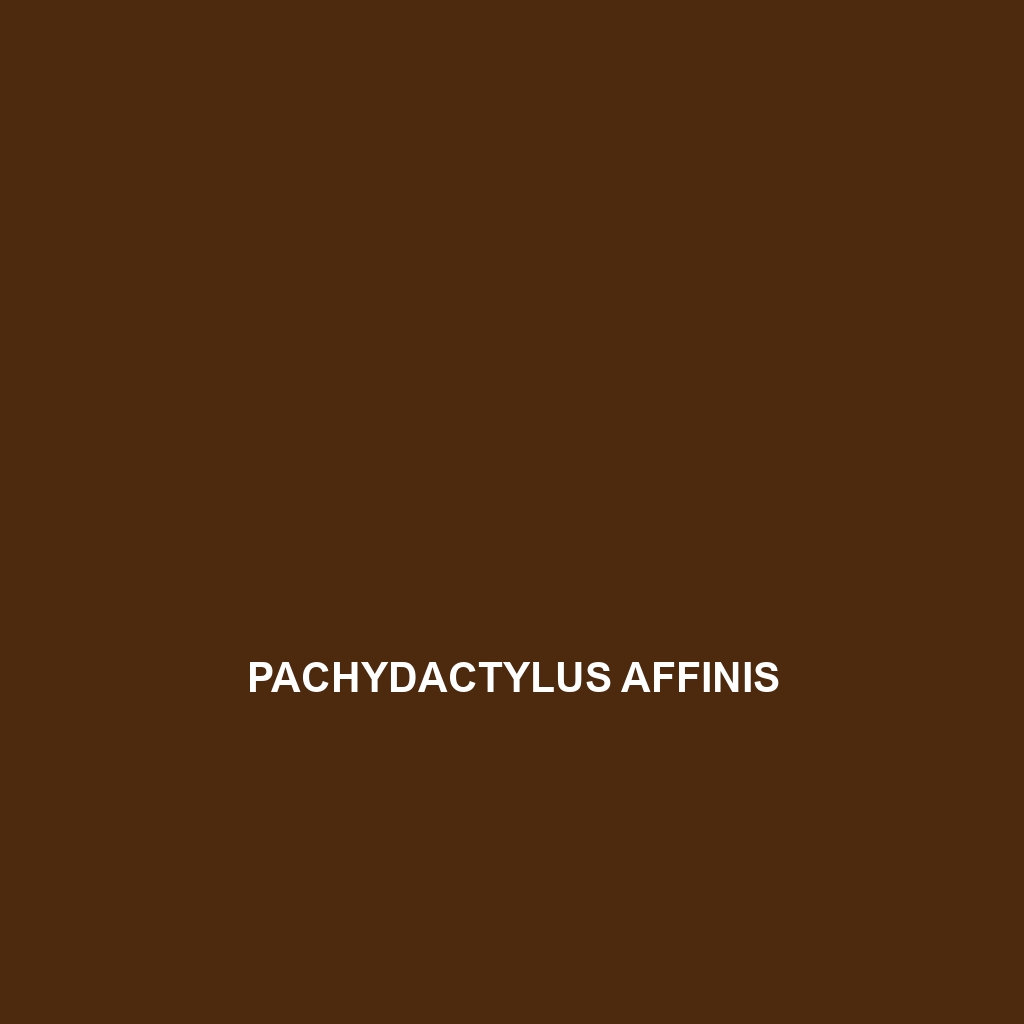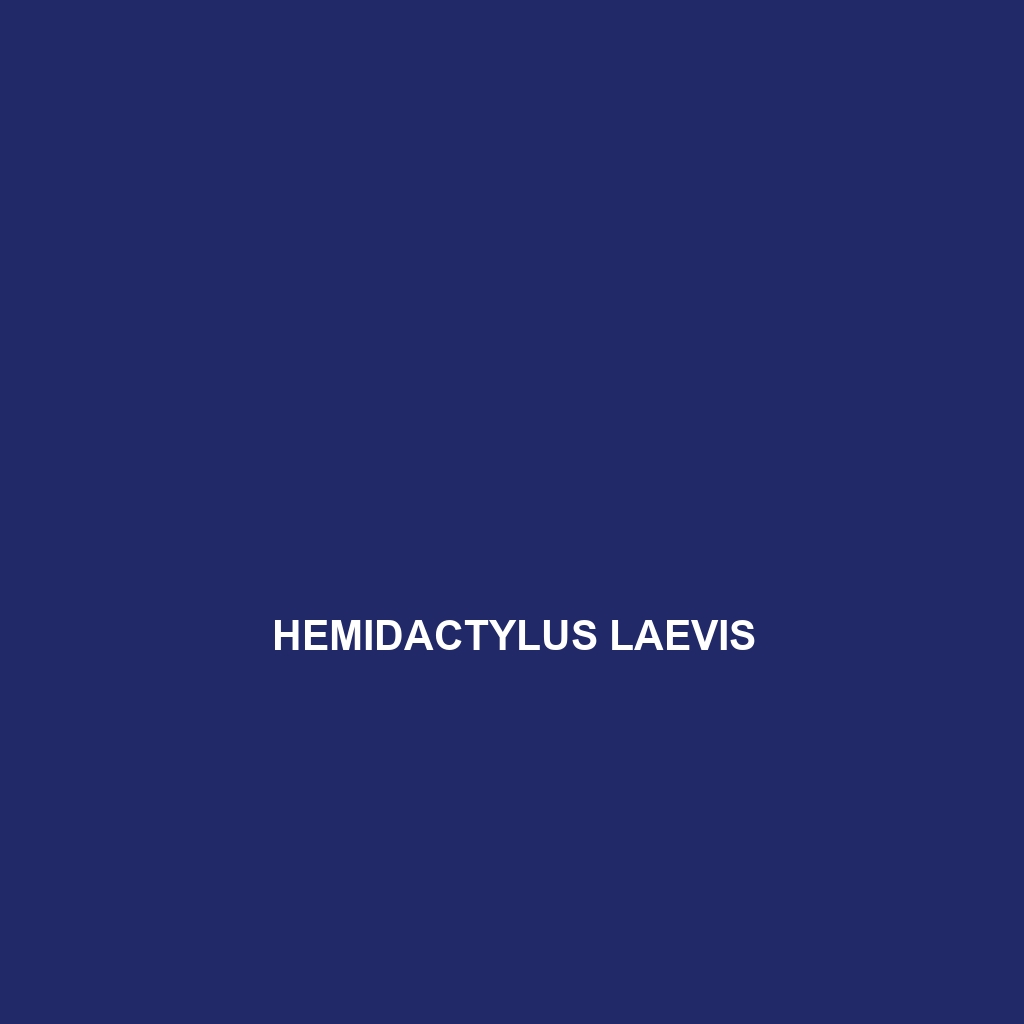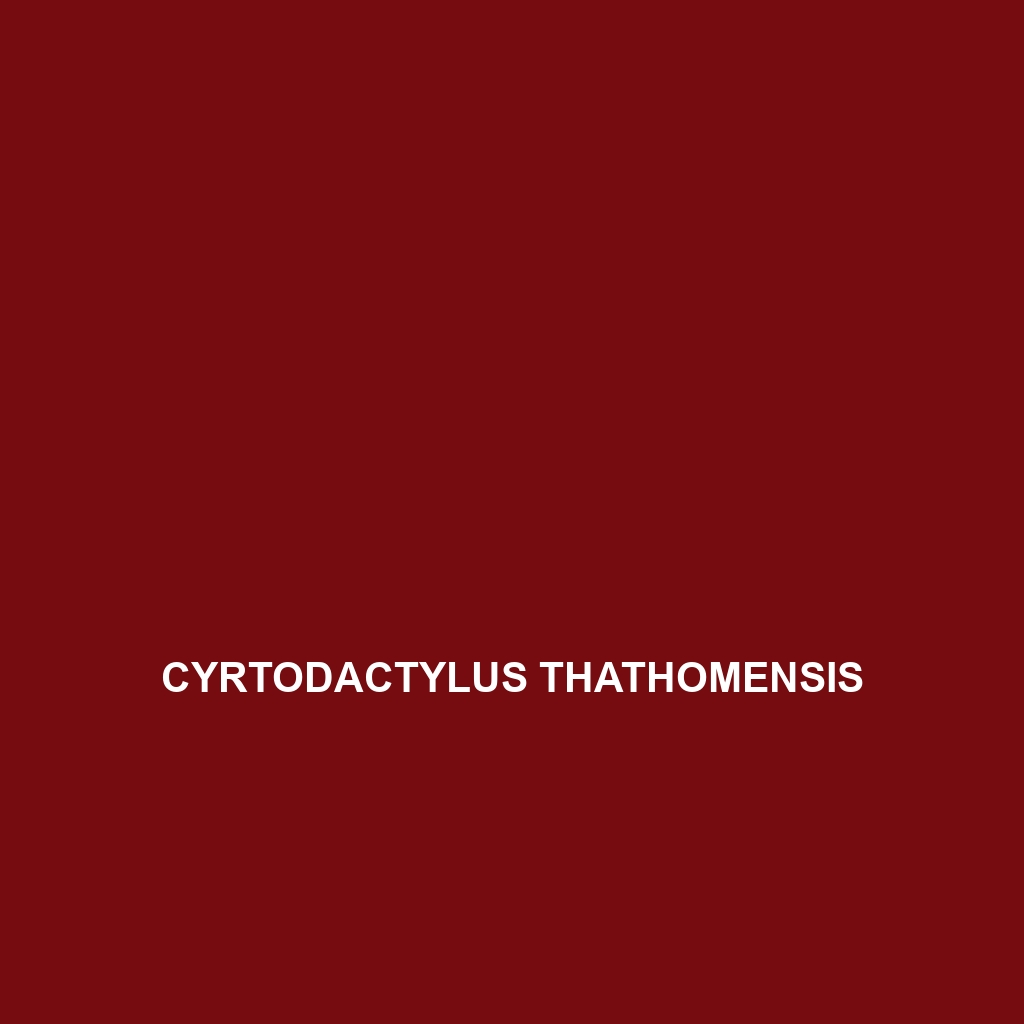<p><b>Paroedura fasciata</b>, commonly known as the <i>Madagascar Fat-Tailed Gecko</i>, is a nocturnal, insectivorous species native to Madagascar's diverse habitats. Recognizable by its robust body and striking coloration, this gecko plays an essential role in regulating insect populations and maintaining ecological balance.</p>
Tag: geological adaptations
Pachydactylus wahlbergii
<p><b>Pachydactylus wahlbergii</b>, commonly known as Wahlberg's spiny gecko, is a nocturnal insectivore native to the arid regions of southern Africa, known for its flattened body, spiny projections, and remarkable tail regeneration ability. This species thrives in savannas and semi-desert environments, playing a vital role in insect population control within its ecosystem.</p>
Pachydactylus oreophilus
<b>Pachydactylus oreophilus</b> is a distinctive gecko native to arid regions of southwestern Africa, featuring an 8-12 cm long, broad body with large, elongated toes for climbing. Primarily nocturnal, it thrives on a diet of insects and plays a crucial role in maintaining ecological balance within its habitat.
Pachydactylus affinis
<p><b>Pachydactylus affinis</b>, a resilient gecko native to Namibia and South Africa, thrives in arid environments and exhibits distinctive mottled skin for camouflage. This nocturnal insectivore features large, bulbous toes for climbing and plays a crucial role in controlling insect populations within its ecosystem.</p>
Lygodactylus ocellatus
<b>Lygodactylus ocellatus</b>, or the ocellated dwarf gecko, is a small, vibrant gecko native to the tropical regions of East Africa, known for its striking coloration and unique ocellated patterns. This nocturnal insectivore thrives in diverse habitats, playing a crucial role in controlling insect populations and maintaining ecological balance.
Lepidodactylus buleli
<p><b>Lepidodactylus buleli</b>, commonly known as Bule's gecko, is a slender, nocturnal gecko native to tropical rainforests and coastal areas of southern Pacific islands, characterized by its light brown to dark olive coloration, large expressive eyes, and unique gliding abilities. This insectivorous species plays a crucial ecological role by regulating insect populations and serves as a food source for various predators, making it an essential part of its ecosystem.</p>
Hemidactylus laevis
<p>The <b>Hemidactylus laevis</b>, known as the smooth-faced gecko, is a nocturnal insectivore thriving in tropical rainforests and urban areas. With a slender body, smooth skin, and remarkable climbing abilities, this adaptable species plays a vital role in controlling insect populations and maintaining ecological balance.</p>
Eublepharis angramainyu
<p>Discover the <b>Eublepharis angramainyu</b>, also known as the Indian leopard gecko, a captivating nocturnal reptile native to arid regions of South Asia. With its striking coloration and unique adaptations for survival, this insectivorous gecko plays a vital role in its ecosystem while showcasing fascinating behavior and reproductive patterns.</p>
Cyrtodactylus thathomensis
Introducing the Cyrtodactylus thathomensis, a fascinating gecko species from Southeast Asia, renowned for its distinct dark brown or gray patterned scales and impressive climbing abilities. This nocturnal creature thrives in humid lowland forests, playing a crucial role in insect population control while facing conservation challenges due to habitat destruction.
Cyrtodactylus redimiculus
Cyrtodactylus redimiculus, commonly found in the tropical forests of Southeast Asia, is a nocturnal gecko measuring 15 to 20 cm, characterized by its robust body, distinctive dark bands, and climbing ability. This vulnerable species plays a crucial role in controlling insect populations and contributes to the biodiversity of its ecosystem.









